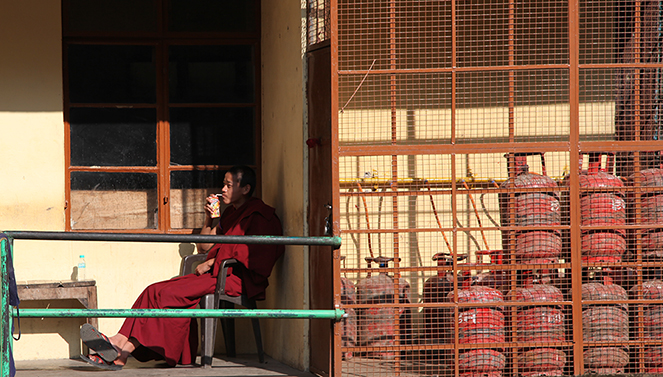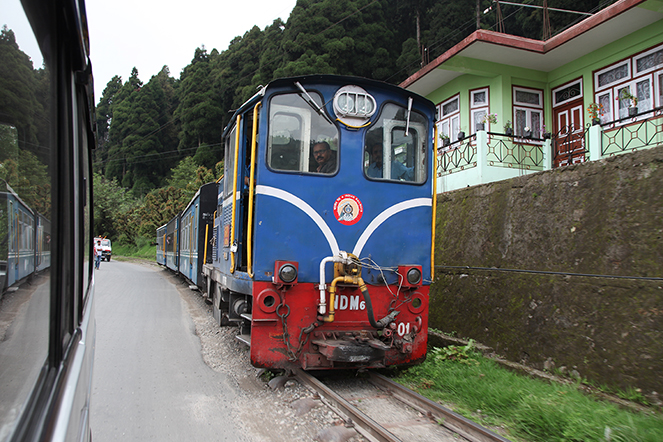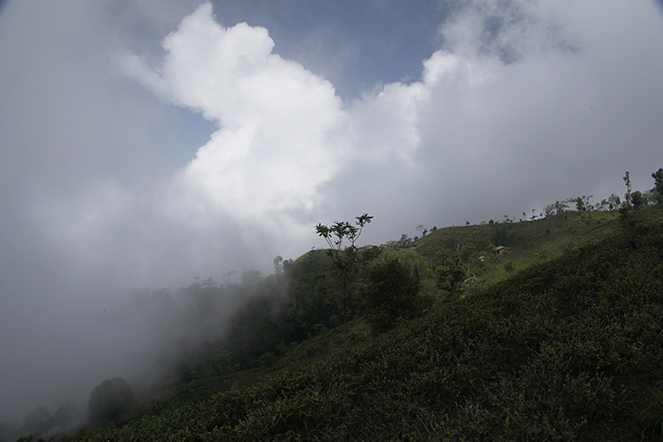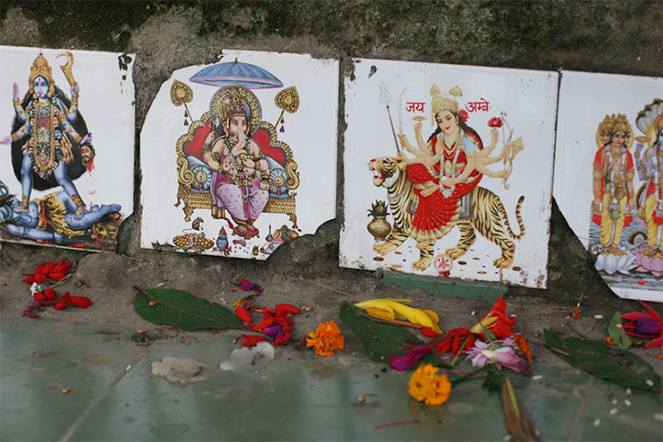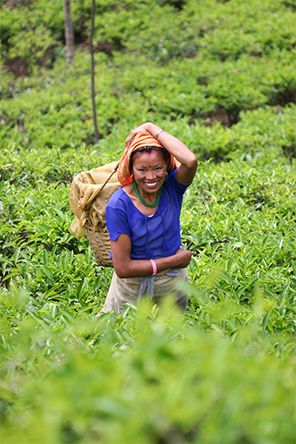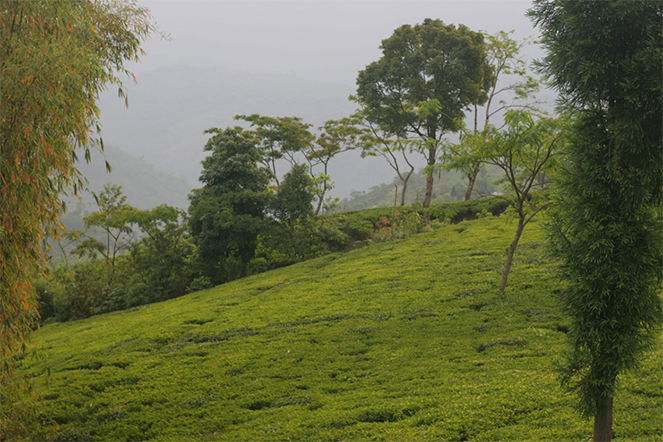On a visit to a Buddhist monastery, I came across this monk sipping a fizzy drink, his back turned on a store of gas bottles. It made me think of the state of the world. We live as if there is no danger, as if it is possible to draw infinitely on the resources of our planet; we let water flow away, we pollute shamelessly, we don’t care about the rubbish contaminating our oceans… We are leaving future generations to deal with the consequences of our actions without considering the risk that one day, our poor, overpopulated, dried out, lifeless planet will explode in our faces.

